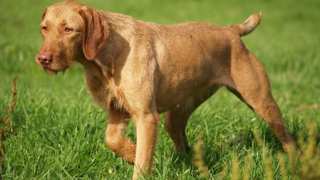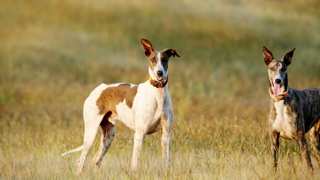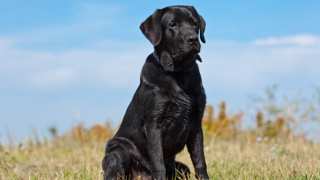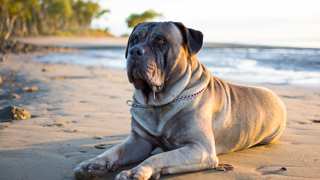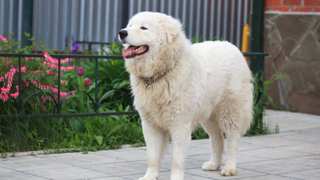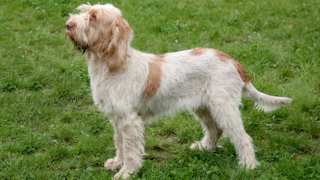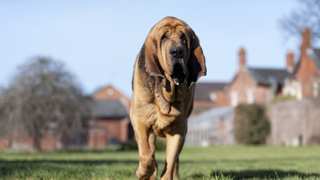The Greyhound diet will need to include animal proteins and healthy carbs, vitamins and minerals, and omega fatty acids--nutrients every dog needs to maintain its health in the long term. This means the best Greyhound dog food is premium dry kibble, as it has balanced portions of the above-listed ingredients.
Just how much does a Greyhound eat? Adults will need about 3½ cups of dry food per day, divided into two meals. Greyhound puppy food portions are smaller: depending on the pup's age, about 2¼ cups per day, divided into three meals (not two) until six months old.
For more info on feeding a Greyhound, see the Greyhound feeding chart below.
(A NOTE ABOUT BLOAT: Deep-chested breeds like the Greyhound are prone to gastric torsion, aka bloat, which occurs when a dog's stomach fills with air when it "wolfs" its food; bloat often happens when a dog eats just before or after exercising. Owners are strongly encouraged to allow an hour between any exercise and feeding to avoid bloat from occurring.)
Dog AgeDog WeightFood TypeAmountFrequency2 Months15 lbsDry (Puppy formula)0.33 cups3x/day3 Months25 lbsDry0.5 cups3x/day6 Months50 lbsDry0.75 cups3x/day9 Months60 lbsDry* (Puppy/Adult)1.25 cups2x/day12 Months70 lbsDry (Adult formula)1.5 cups2x/day14 Months+75 lbsDry1.75 cups2x/day*--Around this time, transition to adult food by mixing in adult formula wit the puppy formula, in slowly increasing amounts with each meal, for one week.
Try if possible to stick to the above-listed amounts. If constantly overfed (and under-exercised), Greys will quickly become overweight--and a fat Greyhound dog will have numerous health problems. You can help control your Grey's weight by having consistent feeding and exercise schedules, by not feeding the dog table scraps (and easy on the Greyhound treats!), and by not leaving food in the Greyhound food bowls all the time.
If you're worried your Greyhound is overweight, try this test: run a hand along the dog's side, and if you can't easily feel any ribs, it's diet time--which means less Greyhound food, and more exercise!

